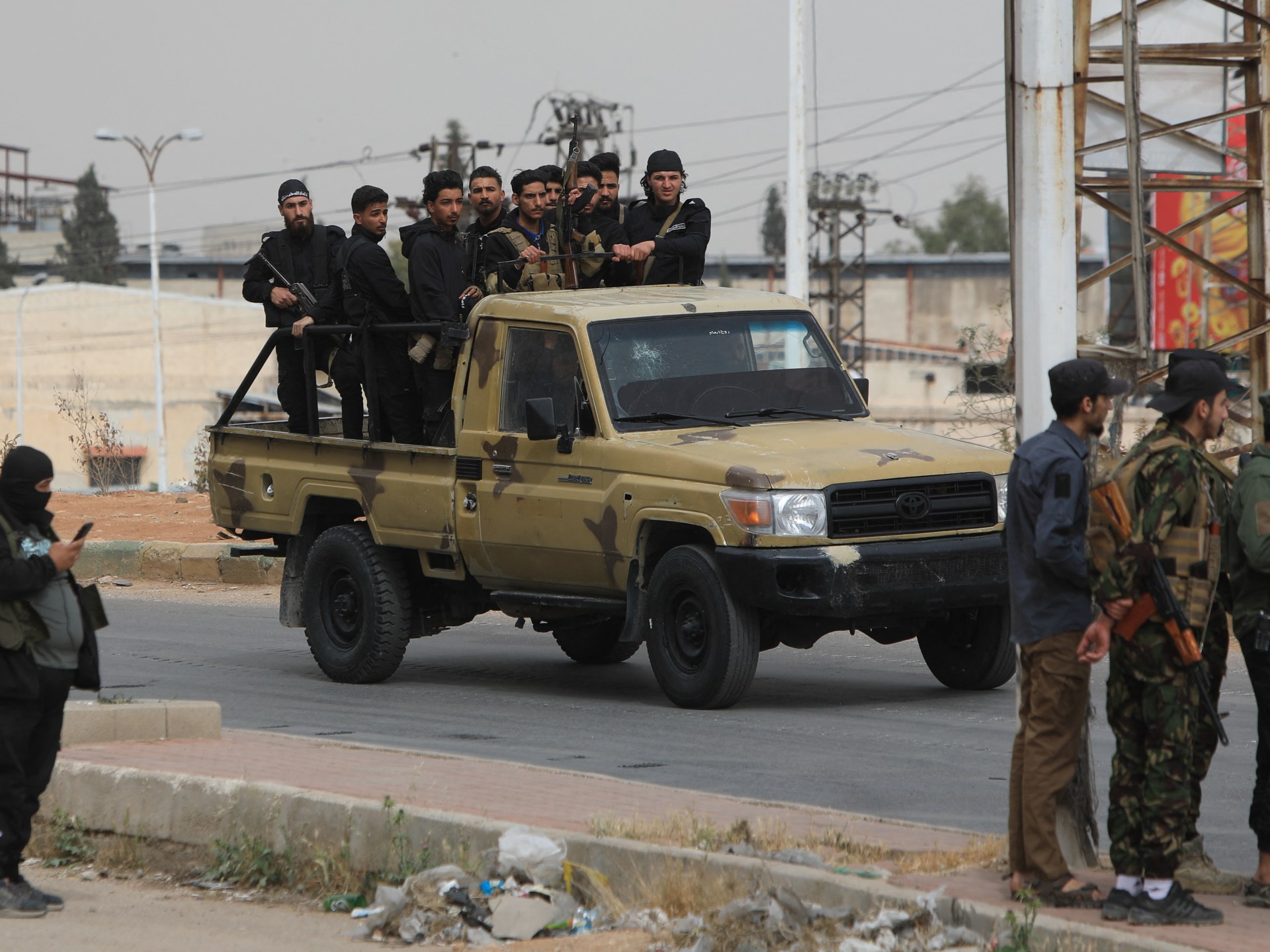Clashes have erupted in Jaramana and Ashrafiyat Sahnaya on the outskirts of the Syrian capital, Damascus, this week.
The violence, which initially involved local armed men from the Druze religious minority and unknown gunmen from other towns, has killed at least 30 people.
Syrian security forces intervened to restore calm, but then Israel attacked Syria, claiming it was “defending the Druze”.
The unrest comes as the Syrian government, in power since the fall of former President Bashar al-Assad in December, tries to assert its control over the whole country.
So, what’s going on in Syria?
How did the latest unrest in Syria start?
Observers agree that the unrest seems to have started when a voice recording of a man cursing the Prophet Muhammad circulated, with claims that a Druze leader was speaking. The authenticity of the recording is questionable.
But it provoked the fury of many Syrians, and on Tuesday, a group of unknown gunmen attacked the mostly Druze town of Jaramana.
The Syrian Ministry of Interior says that its forces went to break up the clashes, before being attacked themselves.
The dead on Tuesday included at least two members of Syria’s General Security Services, the authorities said, while the Syrian Observatory for Human Rights (SOHR) said six Druze fighters and three “attackers” were also killed.
Then, on Wednesday, fighting spread to Ashrafiyat Sahnaya, another town in the Damascus suburbs with a significant Druze population.
A source in the Syrian Interior Ministry told Al Jazeera that 16 members of the security forces were killed in an attack on a security checkpoint in Sahnaya. That prompted more fighting, and six Druze fighters were killed, according to the SOHR.
Israel then launched air attacks on Sahnaya, targeting security personnel, according to the Interior Ministry, while Israel said it had attacked “extremists”.
The Syrian authorities have since announced that calm has been restored in both Jaramana and Ashrafiyat Sahnaya.
What led to the violence?
Syria’s new administration is trying to stabilise the country, but fallout from 12-plus years of war, the many armed groups in the country and the instability that comes with big changes have made for a volatile environment.
The worst unrest was in early March when hundreds were killed in Syria’s coastal region.
Fighters loyal to the Assad regime attacked security forces, setting off the violence as fighters from other areas came in to fight, and widespread attacks were reported against civilians, many from the former president’s Alawite sect.
There is fear in Syria that al-Assad’s supporters will keep trying to overthrow the new authorities, who have not yet been able to exert power and provide security across the whole country.
Some of that fear has morphed into suspicion of minorities such as Alawites and Druze.
The minorities, in turn, fear this suspicion and worry about the fact that there are still armed fighters with backgrounds in groups such as al-Qaeda.
The new government has emphasised that all are equal in the new Syria, but that has yet to quieten these fears.
Add to this mix the potential for fake news to spread on social media, and the country is rife with the tensions that led to the most recent fighting in Jaramana and Ashrafiyat Sahnaya.
Why is Israel involved?
Israel seems to have stepped up its attacks on Syria and is occupying more and more land since the fall of al-Assad.
It already illegally occupied part of the Syrian Golan Heights along the border, and regularly bombed sites in Syria it claimed belonged to pro-Iranian groups like Lebanon’s Hezbollah.
When al-Assad fled, Israel saw an opportunity, analysts say, and stepped up its attacks, claiming that the new government is “extremist” and cloaking itself as a defender of the Druze in Syria, part of whose community lives under Israeli control.
Israeli Prime Minister Benjamin Netanyahu has said “he would not allow” Syrian government forces to operate in Syrian territory south of the capital, Damascus, calling for the “full demilitarisation” of the area.
Some Israelis have called for taking control of Druze-majority areas in southern Syria, claiming that would create an alliance of minorities across the Middle East.
On Wednesday, after the fighting in Ashrafiyat Sahnaya, the Israeli military said that it had taken three Syrian Druze to Israel to receive medical treatment.
Who are the Druze, and who do they support?
The Druze, an ethnoreligious Arabic-speaking group that grew out of Ismaili Shia Islam, live in Jordan, Lebanon and Syria as well as Israel, especially the occupied Golan Heights.
Nobody can claim to know who “all the Druze” support. Individuals or sub-groups within each national community will have differing opinions.
The Druze population in Israel is estimated at 150,000, and Israel conscripts their young men into the army, whereas it does not conscript Palestinian citizens of Israel.
The Druze in Jordan, Lebanon and Syria are openly supportive of the Palestinian cause, while Syrian Druze leaders have vehemently rejected the idea of friendlier ties with Israel.
The communities are important players in their countries’ politics, particularly in Lebanon, where Druze leader Walid Jumblatt has been influential for decades.
In Syria, many Druze were active in the opposition against al-Assad, and have been publicly supportive of the new government.
